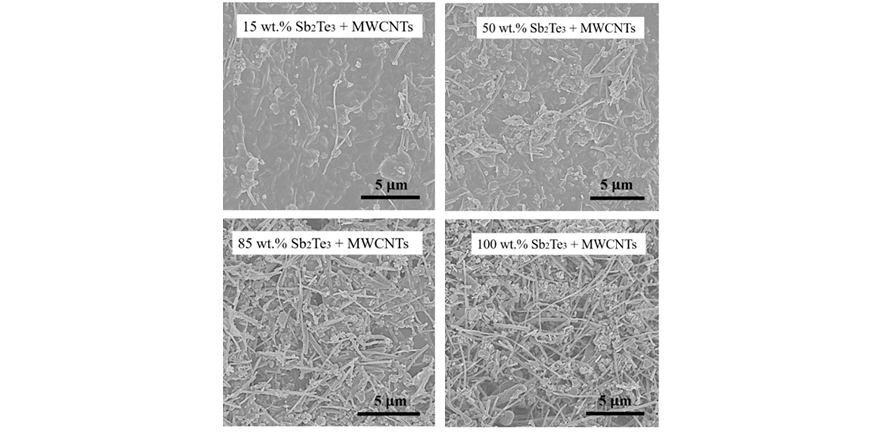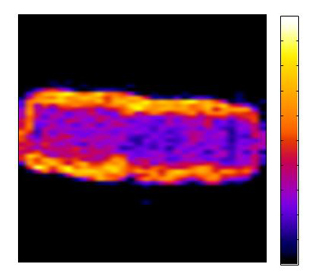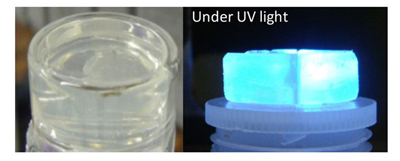
Figure caption: Printed thermoelectric nanocomposites comprising a conducting polymer matrix, inorganic semiconducting nanoparticles and multi-walled carbon nanotubes. These nanocomposites exhibit enhanced thermoelectric properties making them attractive for applications in thermal energy harvesting.
Composite materials are prepared from the combination of two or more different materials with distinct chemical or physical characteristics. The resultant composite exhibits properties which are distinct (and hopefully superior!) to its constituent materials, which remain separate and distinct within the finished structure and are not held together by formal chemical bonds. In nanocomposites, either one of the constituents has dimensions on the nanoscale (<100 nm) or instead the composite structure exhibits nanosized phase separation of the individual components.
By far the most extensive industrial usage of composite materials relates to polymeric matrices reinforced with glass or carbon fibres. These form the mainstay of many important application areas in aerospace, land transport, marine, sports goods and a number of other industrial sectors. In general, however, these materials are mature and highly-developed. Work in the Department tends to focus on other types of composite, designed for more specialised applications.
Composites and nanocomposites can be prepared from a variety of different materials, depending on their intended application. The following areas are currently under exploration in the department.
Within the medical materials field, resorbable composites offer huge potential for controlled degradation and tailored temporary support to a healing site. Particle size and composition can be used to influence the mechanics and degradation profiles and active agents may be incorporated with sustained release tied to the degradation kinetics. Applications include resorbable cardiovascular stents and orthopaedic implants.

Image: MRI scan of a partially degraded, hydrated resorbable microcomposite of calcium phosphate particles in poly lactide-co-glycolide. (Dr Sarah Bennett).
Organic-inorganic composites combine the best of both worlds – the mechanical, optical and thermal properties of inorganic glasses with the elasticity and chemical functionality of organic polymers. Interfacial engineering can be used to control the placement of specific components at fixed locations within the composite, which can lead to materials with tuneable optical properties that find application in light-emitting displays or optical sensors.

Image: Photograph of a silica-ionogel doped with a photoluminescent poly(fluorene) in daylight and under UV irradiation. An ionic liquid confines the packing of the poly(fluorene) within the composite gel, switching on the unique optical fingerprint of its beta-phase.
In the Gordon Laboratory, current interests include the development of various metal-ceramic combinations, designed for use in highly-demanding applications - particularly those requiring microstructural stability and good mechanical properties at very high temperatures. This work includes ceramic thermal barrier coatings on metallic systems, and also novel types of composite based on ceramic matrices reinforced with metallic fibres. The main focus in the latter work, which is being carried out in close collaboration with industrial partners, is on optimisation of the fracture energy of the material, with the potential for high values to be obtained as a result of ductile deformation and rupture of fibres bridging crack planes. Materials have been developed with maximum operating temperatures of around 1200˚C and fracture energies of several tens of kJ m-2.

Image: Basis of a model for prediction of the fracture energy of a metal fibre-reinforced ceramic composite.
